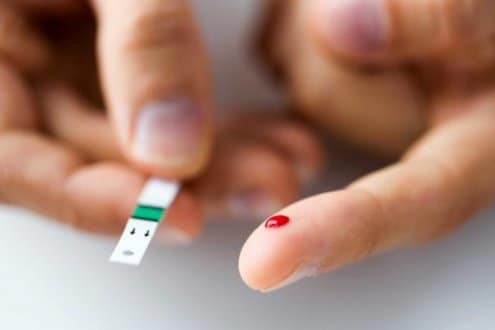What is Type 2 Diabetes?
Formerly called “adult-onset diabetes”, type 2 diabetes refers to a chronic condition where the body is not able to efficiently use insulin – a hormone necessary for regulating the movement of sugar into the cells. This disease is characterized by insulin resistance, lack of insulin in the body, and most importantly, high blood sugar levels. Type 2 diabetes is known to occur because of obesity and lack of exercise. Other than that, the most common reason for people having this disease is because of genetics.
A condition which is called insulin resistance is the main cause of type 2 diabetes. It occurs when the body cells resist the effects of insulin. The insulin is responsible for regulating the glucose in the blood into the innermost part of the cells. When the cells resist this action, glucose starts to build up in the blood, thus allowing a chronic condition known as type 2 diabetes to develop. Compared to type 1 diabetes, type 2 diabetes is more common and has recorded many cases of children and teens developing the disease at an early age.
Symptoms
Compared to other chronic diseases, the symptoms of type 2 diabetes are mild that you won’t suspect it. The symptoms develop slowly, and oftentimes, it will take years for you to know that you’re living with it already. These are as follows:
- Increased thirst or being very thirsty
- Blurry vision
- Slow-healing sores or wounds that don’t heal at all
- More infections
- Sweating
- Fatigue, Dizziness, and Confusion
- Hunger
- Weight loss
- Seizures
- Darkened skin (armpits and neck)
- Frequent urination
- Numbness in the hands or feet
- Yeast infections
Contributing Factors of Type 2 Diabetes
Here are the risk factors that may increase your chances of getting type 2 diabetes:
- Age – People at the age of 45 or older have higher chances of acquiring the disease. The reasons include lack of exercise, gaining weight, and loss of muscle mass. However, as mentioned earlier, the disease has already recorded millions of cases involving children and teenagers.
- Weight – Obesity is considered to be the main risk factor for type 2 diabetes. Proper exercise and losing fat can help in preventing this condition.
- Family History – There is a high chance that a child or any member of the family can get diabetes following recorded cases in the family tree.
- Lack of exercise – Physically inactive individuals may have greater chances of acquiring diabetes. Physical activities, such as involving in sports and working out will use glucose as energy, thus preventing the disease to develop.
- Prediabetes – This is a condition where the blood sugar level is higher than expected. But this condition is not yet classified as diabetes. Once this condition is not treated and worsens, it will progress to type 2 diabetes.
- Darkened areas of the skin – These areas include the armpits and neck. This darkening condition oftentimes signifies possible insulin resistance.
Complications
Type 2 diabetes affects the major organs of the body. This disease may pose life-threatening complications such as:
- Retinopathy – Damage in the eyes
- Neuropathy – Damage or dysfunction in the nerves
- Nephropathy – Damage in the kidneys
- Sleep apnea – Serious sleep disorder
- Alzheimer’s disease – A neurodegenerative disease
- Skin conditions – Bacterial and fungal infections
- Hearing impairment – Hearing loss or inability to hear
Treatment and Prevention
Aside from receiving medication as a way to treat type 2 diabetes, changing the lifestyle is also a smart move to preventing the said disease from complicating and causing more problems.
- Daily exercise – You can start small by doing a 10-minute workout at home. Other activities include biking, jogging, and walking. Gradually, you can increase the amount of time for your daily exercise. Aim for 30-60 minutes of physical activity in a day. This is also a good way to lose weight.
- Eat healthy foods – You can create a meal plan according to your dietician. Always choose food that is high in fibre. Also, do not forget to include vegetables and fruits in your meal plan. As much as possible, consume fewer calories.
- Always check your blood sugar levels – Regular checkups will help you manage diabetes. Visit your doctor regularly and talk about the things that you could do to successfully prevent more complications.
Doctor’s Recommendation
Adopting a lifestyle with lots of exercise and low sugar consumption dramatically lowers the probability of acquiring type 2 diabetes, and if it does develop, metformin in monotherapy is much more likely to fully ameliorate any complications of the hyperglycemia associated with type 2 diabetes.



